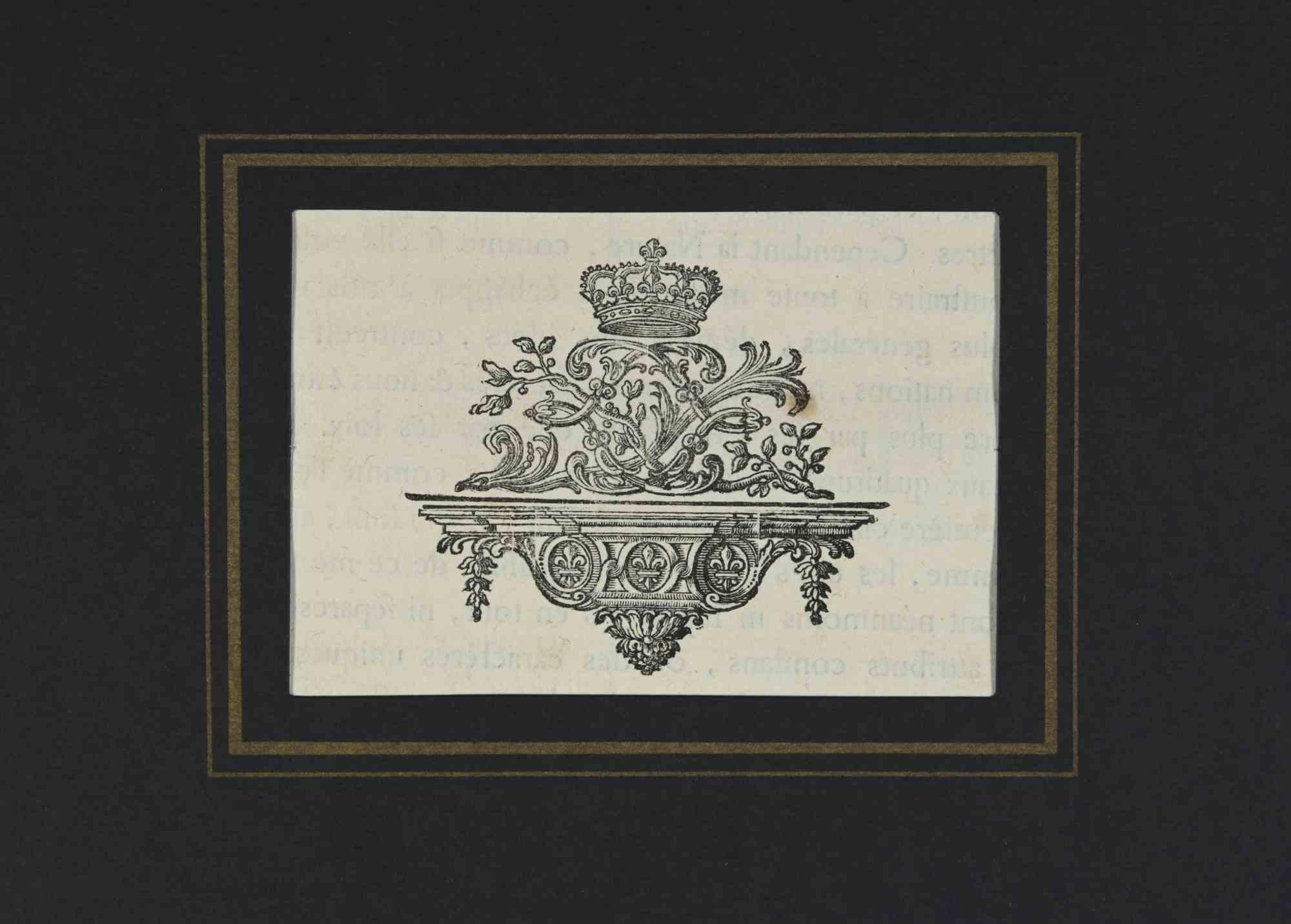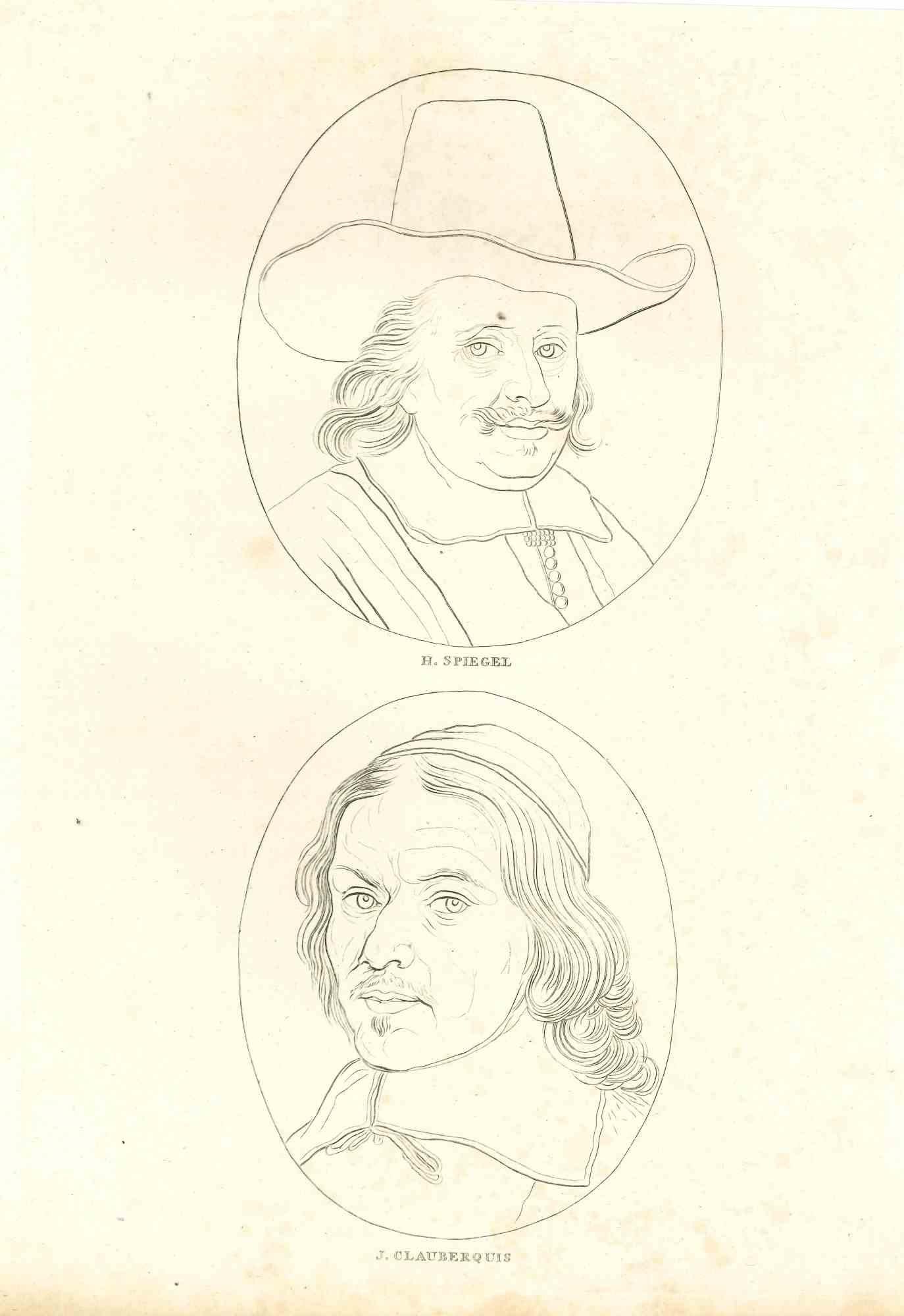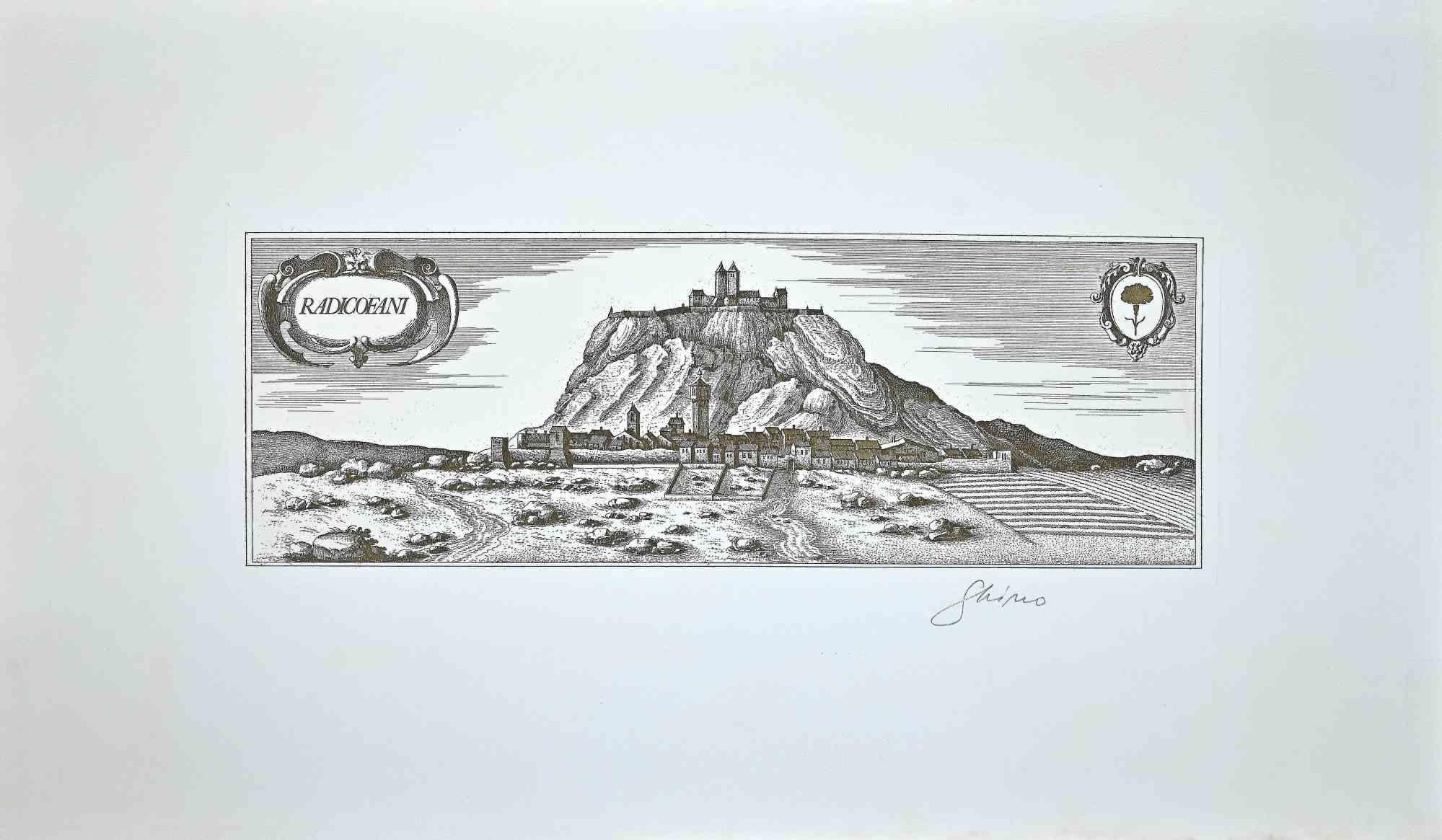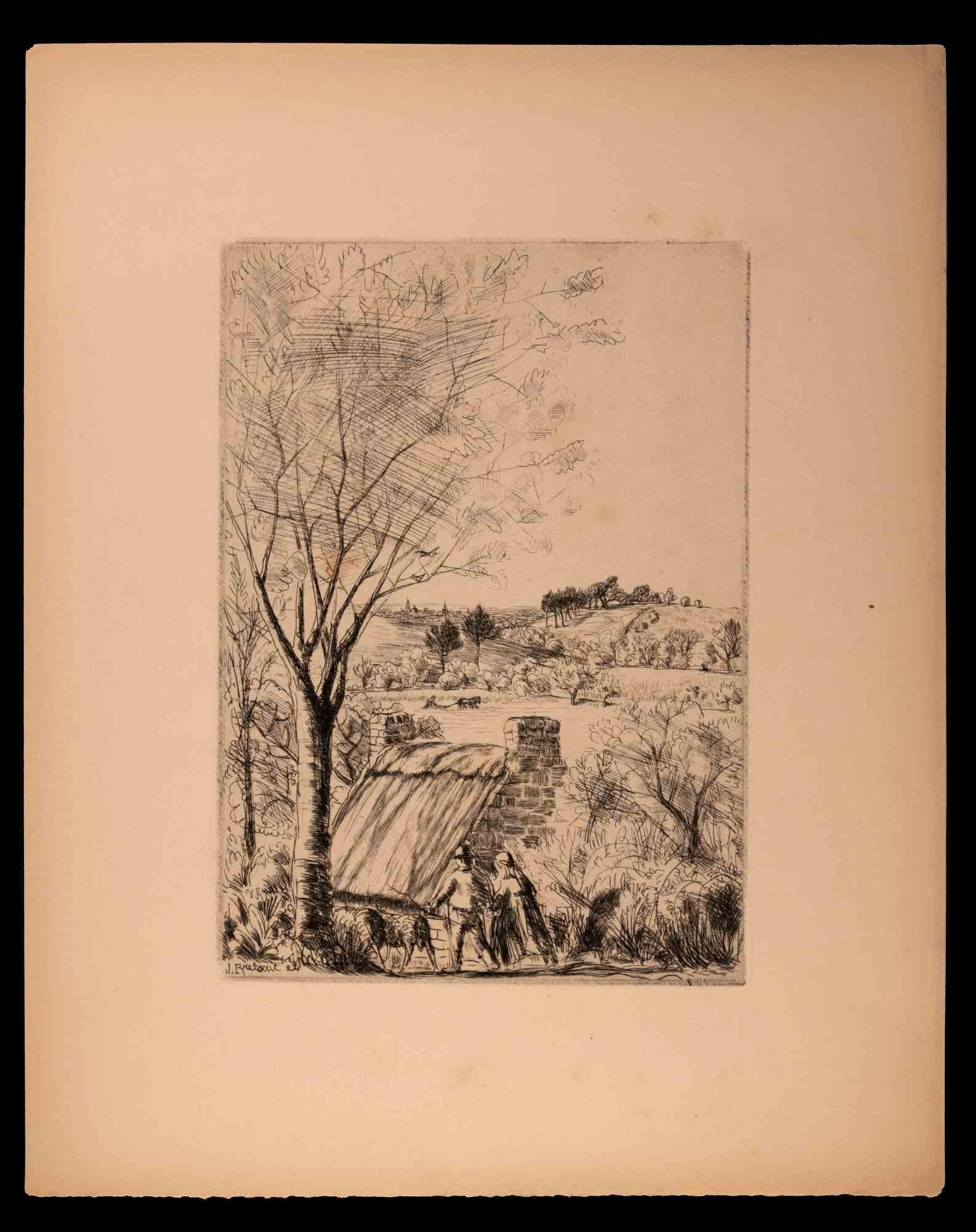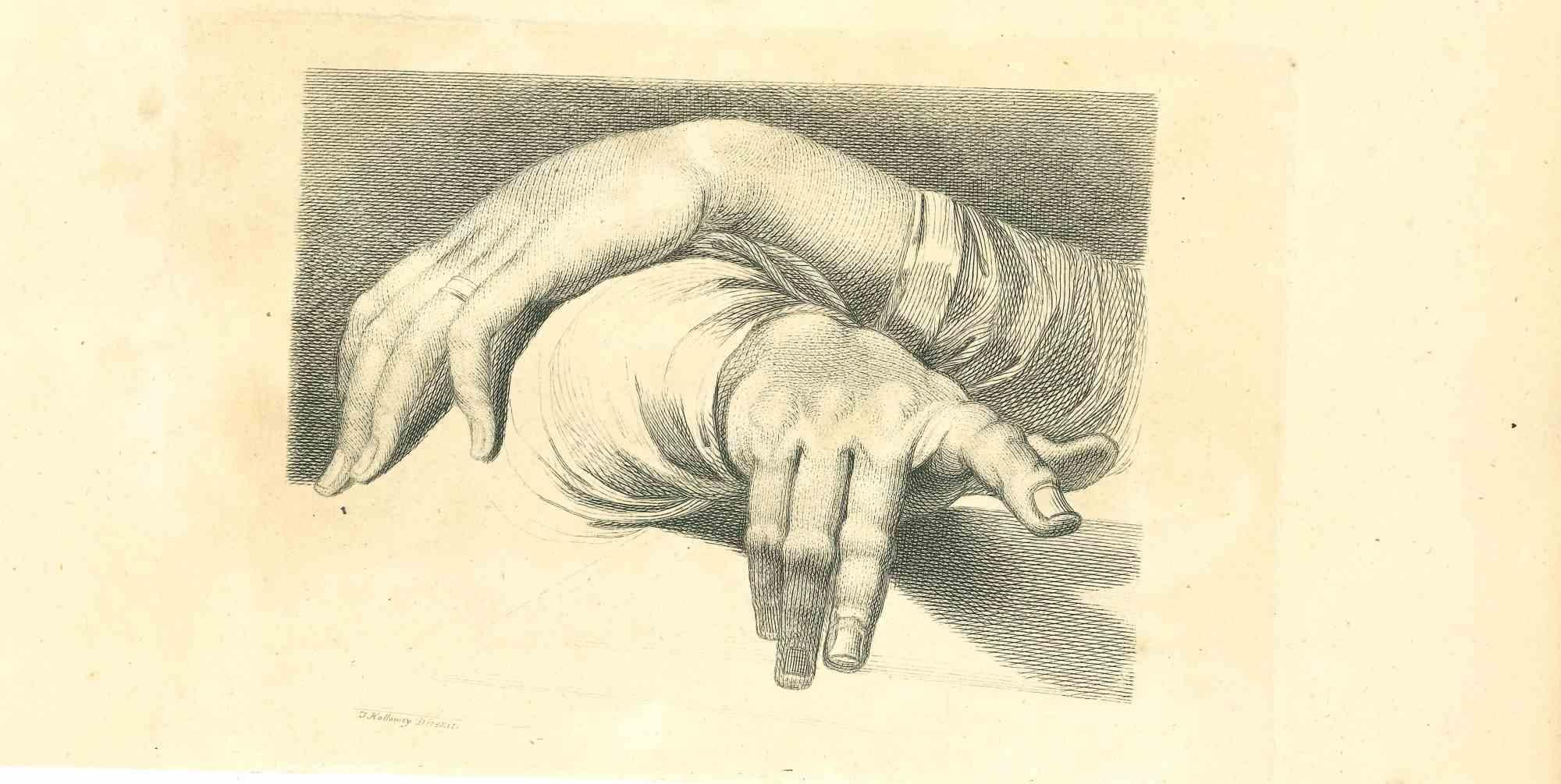Items Similar to The Organs - Etching by Jacques Baron - 1771
Want more images or videos?
Request additional images or videos from the seller
1 of 2
Jacques BaronThe Organs - Etching by Jacques Baron - 17711771
1771
About the Item
The Organs is an etching realized by Jacques Baron in 1771.
The artwork Belongs to the suite "Histoire naturelle, générale et particulière avec la description du Cabinet du Roi". Paris: Imprimerie Royale, 1749-1771. The Artist's signature is engraved lower right.
Good conditions.
- Creator:Jacques Baron
- Creation Year:1771
- Dimensions:Height: 9.85 in (25 cm)Width: 7.49 in (19 cm)Depth: 0.04 in (1 mm)
- Medium:
- Movement & Style:
- Period:1770-1779
- Framing:Framing Options Available
- Condition:Insurance may be requested by customers as additional service, contact us for more information.a.
- Gallery Location:Roma, IT
- Reference Number:Seller: T-1414221stDibs: LU650312841712
About the Seller
4.9
Platinum Seller
These expertly vetted sellers are 1stDibs' most experienced sellers and are rated highest by our customers.
1stDibs seller since 2017
6,767 sales on 1stDibs
Typical response time: 3 hours
- ShippingRetrieving quote...Ships From: Grasse, France
- Return PolicyA return for this item may be initiated within 14 days of delivery.
Auctions on 1stDibs
Our timed auctions are an opportunity to bid on extraordinary design. We do not charge a Buyer's Premium and shipping is facilitated by 1stDibs and/or the seller. Plus, all auction purchases are covered by our comprehensive Buyer Protection. Learn More
More From This SellerView All
- The River By Meadow - Original Etching by Amadée Feau - 1921Located in Roma, ITThe River By Meadow is an original etching artwork on creamy-colored paper realized by French artist Amadée Feau (1872-1952) in 1921. Signed on the plate on the lower right and date...Category
1920s Modern Landscape Prints
MaterialsEtching
- The Shandy Bath - Original Etching by Raphael Drouart - Early 20th centuryLocated in Roma, ITThe Shandy Bath is an Original Etching realized in the Early 20th Century by Raphael Drouart (1884-1972). The artwork is in good conditions. The artwork represents a poetic mystic ...Category
Early 20th Century Modern Figurative Prints
MaterialsEtching
- Eros and Thanatos - Original Etching by Sergio Barletta - 1970sBy Sergio BarlettaLocated in Roma, ITEros and Thanatos is an Original Etching realized by Sergio Barletta in the Early 1970s. Good conditions. Hand-signed. Numbered. Edition, 99/160 The artwork is depicted through ...Category
1970s Modern Figurative Prints
MaterialsEtching
- The Shandy Bath - Etching by Raphael Drouart - Early 20th centuryLocated in Roma, ITThe Shandy Bath is an Original Etching realized in the Early 20th Century by Raphael Drouart (1884-1972). The artwork is in good conditions Titled on the rear. The artwork represe...Category
Early 20th Century Modern Figurative Prints
MaterialsEtching
- Woman - Original Etching by Bernard Bécan - 1925By Bernard BécanLocated in Roma, ITWoman is an original etching realized in 1925 by Bernard Bécan (1890-1943). In good condition. Hand-signed. Numbered. Edition, 2/80. The artwork is ...Category
Mid-20th Century Modern Figurative Prints
MaterialsEtching
- Woman at Mirror - Original Etching by Maurice Hardy - Early 20th CenturyLocated in Roma, ITWoman at Mirror is an original modern artwork realized by Maurice Hardy in the early 20th Century. Mixed colored etching on paper. Hand signed by the artist on the lower right marg...Category
Early 20th Century Modern Portrait Prints
MaterialsEtching
You May Also Like
- The Magicians Message From Cuevas' ComediesBy José Luis CuevasLocated in Lake Worth Beach, FLThe Magicians Message From Cuevas' Comedies. Screenprint with collage additions and five lithographs from a portfolio of ten lithographs (one with screenprint and embossing, one with embossing) and five screenprints (two double-sided, one with collage additions). Pencil signed and dated 1971, edition 84/100, blindstamp visible, published by Collector's Press, San Francisco. Framed under Plexiglas. Jose Louis Cuevas was born in Mexico City in 1933 -2017. A master draftsman, Jose Luis Cuevas played a pivotal role in Latin America's drawing and printmaking renaissance of the sixties and seventies. He is also associated with Latin America's neofigurative movement, along with artists such as Fernando Botero and Antonio Segui. By the age of fourteen, he had illustrated numerous periodicals and books and had had his first exhibition in Mexico City. In 1953 Cuevas published La cortina del nopal (The Cactus Curtain), an article condemning aspects of the Mexican Mural movement and advocating greater artistic freedom. This philosophy inspired the founding in 1960 of the group Nueva Presencia, which he joined for a brief time. It promoted individual expression and figurative art reflecting the contemporary human condition. Cuevas' work was influenced by the graphic art of Goya and Picasso as well as by Posada and Orozco, whose representations of deformed creatures, degraded humanity and prostitutes were of particular thematic interest. Over the years, he has paid homage to his favorite painters as well as writers, such as Dostoevsky, Kafka, Quevedo and Sade, in numerous series of drawings and prints. Cuevas has said that his drawing represents the solitude and isolation of contemporary man and man's inability to communicate. It is for this reason that he often distorts and transforms the human figure to the point of uniqueness. Cuevas has had solo exhibitions in museums and galleries throughout the world including the: University of Texas, Austin, 1961, the San Francisco Museum of Art, California,1970, the Museo de Arte Moderno, Mexico City, 1972, Museo de Arte Contemporaneo, Caracas, 1974, Phoenix Art Museum, Arizona, 1975, Musee d'Art Moderne, Paris, 1976. His work was included in Four Masters of Line: Jose Luis Cuevas, Alexander Calder, Stuart Davis, and Morris Graves, Musee de la Napoule, France, 1957 and in The Emergent Decade, Cornell University and Solomon R. Guggenheim Museum, New York, 1965. Among his many awards are First International Prize for Drawing, Biennial of Sao Paulo, 1959, First Prize, International Black and White Exhibition, Lugano, Switzerland, 1962, First International Prize for Printmaking, Triennial of Graphic Arts, New Delhi, India, 1968, First Prize, III Latin American Print...Category
1970s Modern Figurative Prints
MaterialsLithograph, Etching
- Miss WillieLocated in Columbia, MOBROOKE CAMERON Miss Willie 1977 Copper plate etching Ed. 36/50, 38/50 20 x 16 inchesCategory
1970s Modern Figurative Prints
MaterialsEtching
- Leonor Fini - Untitled - Original Handsigned EtchingBy Leonor FiniLocated in Collonge Bellerive, Geneve, CHLeonor Fini - Untitled - Original Handsigned Etching Circa 1982 On colored paper Handsigned and Numbered Edition: 275 Dimensions: 69 x 52.5 cm Leonor Fini is considered one of the most important women artists of the mid-twentieth century, along with Leonora Carrington, Frida Kahlo, Meret Oppenheim, Remedios Varo, and Dorothea Tanning – most of whom Fini knew well. Her career, which spanned some six decades, included painting, graphic design, book illustration, product design (the renowned torso-shaped perfume bottle for Schiaparelli’s Shocking), and set and costume design for theatre, ballet, opera, and film. In this compellingly readable, exhaustively researched account, author Peter Webb brings Fini’s provocative art and unconventional personal life, as well as the vibrant avant-garde world in which she revolved, vividly in life. Born in Buenos Aires in 1907 (August 30 – January 18, 1996, Paris) to Italian and Argentine parents, Leonor grew up in Trieste, Italy, raised by her strong-willed, independent mother, Malvina. She was a virtually self-taught artist, learing anatomy directly from studying cadavers in the local morgue and absorbing composition and technique from the Old Masters through books and visits to museums. Fini’s fledging attempts at painting in Trieste let her to Milan, where she participated in her first group exhibition in 1929, and then to Paris in 1931. Her vivacious personality and flamboyant attire instantly garnered her a spotlight in the Parisian art world and she soon developed close relationships with the leading surrealist writers and painters, including Paul Eluard, Salvador Dali, Man Ray, and Max Ernst, who became her lover for a time. The only surrealist she could not abide because of his misogyny was André Breton. Although she repeatedly exhibited with them, she never considered herself a surrealist. The American dealer Julien Levy, very much impressed by Fini’s painting and smitten by her eccentric charms, invited her to New York in 1936, where she took part in a joint gallery exhibition with Max Ernst and met many American surrealists, including Joseph Cornell and Pavel Tchelitchew. Her work was included in MoMA’s pivotal Fantastic Art, Dada and Surrealism exhibition, along with De Chirico, Dali, Ernst, and Yves Tanguy. In 1939 in Paris she curated an exhibition of surrealist furniture for her childhood friend Leo Castelli for the opening of his first gallery. Introductions to her exhibition catalogues were written by De Chirico, Ernst, and Jean Cocteau. A predominant theme of Fini’s art is the complex relationship between the sexes, primarily the interplay between the dominant female and the passive, androgynous male. In many of her most powerful works, the female takes the form of a sphinx, often with the face of the artist. Fini was also an accomplished portraitist; among her subjects were Stanislao Lepri...Category
1980s Modern Nude Prints
MaterialsEtching
- Jean Jansem - Original EtchingBy Jean JansemLocated in Collonge Bellerive, Geneve, CHJean Jansem - Original Etching Title: Loneliness Dimensions: 40 x 30 cm Edition of 175 Paper: vélin de Rives 1974 Jean Jansem was born in 1920 at Seuleuze in Asia Minor and spent h...Category
1970s Modern Figurative Prints
MaterialsEtching
- Ossip Zadkine - Ultimate Step - Original EtchingBy Ossip ZadkineLocated in Collonge Bellerive, Geneve, CHEtching monogrammed in the plate. Illustration for a Robert Ganzo's poem "Lespugue" Editions Marcel Sautier, Paris, 1966. Conditions: Good Conditions Dimensions: 25,5 x 16,5 cm. Vellum paper Référence Czwiklitzer n°55. 1890 Zadkine was born on the 14th of July in Vitebsk, a city in Belarussia, on the Dvina. His father Ephime teaches classical languages at the local seminar. His mother Sophie Lester descended from Scots, who emigrated at the time of Peter the Great. 1905 His parents send him to Sunderland, in the North of England, where his mother’s family lives. He studies English and attends modelling courses at the local Art School. 1905-1909 He travels to London without his parents permission where he attends courses at the Regent Street Polytechnicum. In order to earn his living, he plans to work with a stonecutter. He visits the British Museum and studies classical sculpture there. Returns to Smolensk where he produces his first sculpture. Goes back to London. 1909-1910 Zadkine settles in Paris and studies in the ecole Nationale des Beaux-Arts. Finds a workshop in a building called La Ruche, in the XVe arrondissement. 1911 Zadkine presents statues and drawings at the annual Salon d’Automne and at the Salon des Indépendants. It is the ‘cubists’ who draw his attention in Paris. Is essentially close to Russian students who get together in a cafe of the ‘Quartier Latin’. Has himself called Joe Zadkine until 1914. 1912-1913 Finds a room in the neighbourhood of Montparnasse, in the rue de Vaugirard. Studies Roman sculpture. Zadkine is immortalized by his neighbour, photographer Marc Vaux, in his new workshop. Meets Brancusi, Guillaume Apollinaire, Jacques Lipchitz, Pablo Picasso, Antoine Bourdelle, Leopold Survage and Robert Delaunay. Henri Matisse visits Zadkine’s workshop. 1914-1915 Exhibition at the Freie Sezession in Berlin, at De Onafhankelijken in Amsterdam (Holland) and at the Allied Artists Association in London. Thanks to collector Paul Rodocanachi, he can settle in a workshop in the rue Rousselet. Becomes friends with Modigliani. 1916-1917 Works as a stretcher-bearer on the front. Produces drawings and watercolours dealing with war. Zadkine is discharged in 1917. He says he is ‘bodily and spiritually’ ruined by the war. After his stay in the Epernay hospital he recovers in Bruniquel, in the southwest of France. 1918-1919 Makes a series of 20 war etchings...Category
1960s Modern Figurative Prints
MaterialsEtching
- Studies for Head and Shoulders Sculpture - Ideas Sculpture Study British ArtBy Henry MooreLocated in London, GBThis original etching is hand signed by the artist in pencil "Moore” in the lower right margin. It is also hand numbered in Roman numerals, in the lower left margin. This impression ...Category
1960s Modern Figurative Prints
MaterialsEtching
Recently Viewed
View AllMore Ways To Browse
Gustave Doré On Sale
Henry Monnier
Hockney Pen And Ink
Jehudo Epstein
Julian Opie Lenticular
Kenny Scharf On Sale
Mr Brainwash All You Need
Omega Beijing 2008
Picasso La Pique 1959
Sevilla Lithograph
Thomas McKnight On Sale
Carrera U Carrera
Corpse Of Christ
Dali Etching Ea Proof
Dali Le Cavalier
Dali Vitraux
Durer Durand
Erte 5 Print
